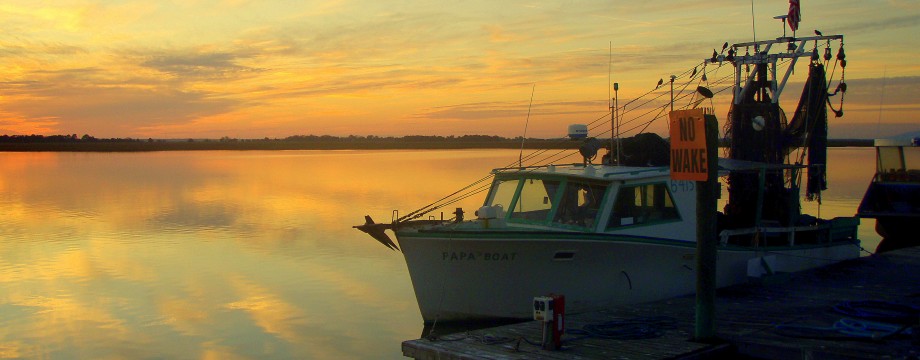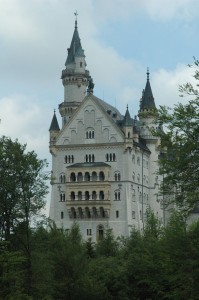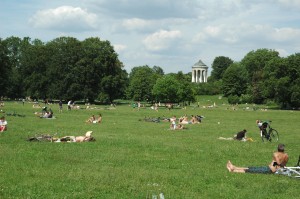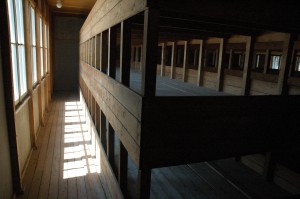In the south of Germany, a wooded, rural area exists bordered in part by the Alps and the Black Forest.
This Bavarian countryside is dominated by agriculture and the ever increasing wind and solar farms. Towns and villages dot the green hills while cosmopolitan Munich lies in the uppermost reaches of the region. Once under the rule of kings and queens, Bavaria’s Royal Family resided in Munich, the region’s capital.
In the south, a stone’s throw from Austria, lies what was the Royal Family’s summer residence in Fussen at the foot of the Romantic Road, a stretch of picturesque Bavarian villages. Often seen only as a day-trip from Munich, Fussen, or any of the “Romantic” villages, serve well as a base for discovering rural Bavaria.
Slightly more touristy than other options, although convenient for popular sites, Fussen is a charming city trying to retain much of its own character. Here, one can find the castles Neuschwanstein and Hohenschwangau, the latter, an older palace built by patriarchs of the Royal Family. Neuschwanstein , however, has gained fame for its extravagance and a link to Walt Disney who was inspired by the unfinished home of King Ludwig II for his design of the Cinderella Castle.
Only a third of the rooms in this massive estate were completed due to Ludwig’s curious and untimely demise. In short order, the ruling king was declared mentally insane, stripped of his official power, removed from his home and days later, found dead in a lake outside Munich.
Still unknown is the validity of his insanity, but Ludwig did exhibit eccentric behavior in his construction of Neuschwanstein. This included an artificial cave, or grotto, inside his home complete with stalagmites and stalactites. Also, in his bed chambers, 14 woodcarvers were kept busy for four years completing ornate designs including a canopy over the bed depicting the steeples of gothic cathedrals.
Two hours away by train, Munich, like most German cities, exhibits all the characteristics of a modern city after suffering extensive damage in the Second World War. Despite its size, Munich has succeeded in planning a city of international prominence that still retains a sense of community. This is accomplished, in part, through the use of green space most notably the English Garden. One of the world’s largest urban parks at 920 acres, the English Garden contains wooded trails, running water, swimming holes, lakes, open fields and an artificial wave used for surfing.
A vibrant social and welcoming atmosphere adds to the culture found in numerous museums and art galleries. Chiefly among these is the Deutches, a renowned science museum, and the BMW Museum located at BMW headquarters in Munich.
However quaint the countryside or enjoyable the city, Bavaria is also home to some of Germany and the world’s darkest history. Thirty minutes by public transportation will carry Munich’s guests to the Dachau Concentration Camp. Used predominately as a place for political prisoners, often either Jewish or Soviet, Dachau carries the title of work camp rather than the death camp distinction of Auschwitz and other Nazi sites.
No matter the name given, Dachau was the scene of more than 43,000 murders during the Holocaust. The only concentration camp in existence during all 12 years of Nazi rule, Dachau casts a somber pale on all those entering the camp gate branded with a searing lie, “work will set you free.”
Housed in hellacious environments, forced to work through grueling labor with little to no nourishment under the relentless harassment and torture of SS soldiers, prisoners of Dachau suffered indescribable cruelties. The experience of walking through this house of death is all-together life changing and wholly unforgettable.
Unforgettable is, in fact, the exact aim of curators and all those associated with the site. In an effort to increase accessibility, the site is free of charge and guided tours are offered at just €3 (check online for times). Tour guides at Dachau are often times not merely students of history, this is after all modern history, a far cry from civil war impersonators and colonial exhibits.
Many guides are intimately familiar with this tragedy, our guide not excluded. Her grandfather, a veteran of the Nazi forces, passed away 10 years ago in his eighties proud until his death of his work in the war effort. This indoctrination, witnessed by his granddaughter, is for her unimaginable and therefore she strives to teach others what happened so that it may never occur again.
As Auschwitz survivor and author Primo Levy said, “It has happened, therefore it can happen again.”







